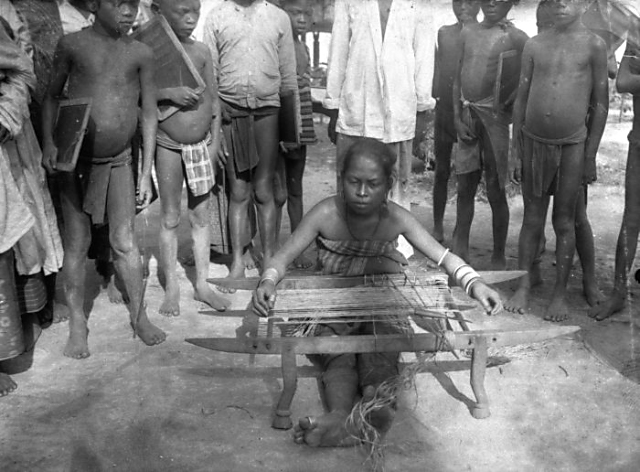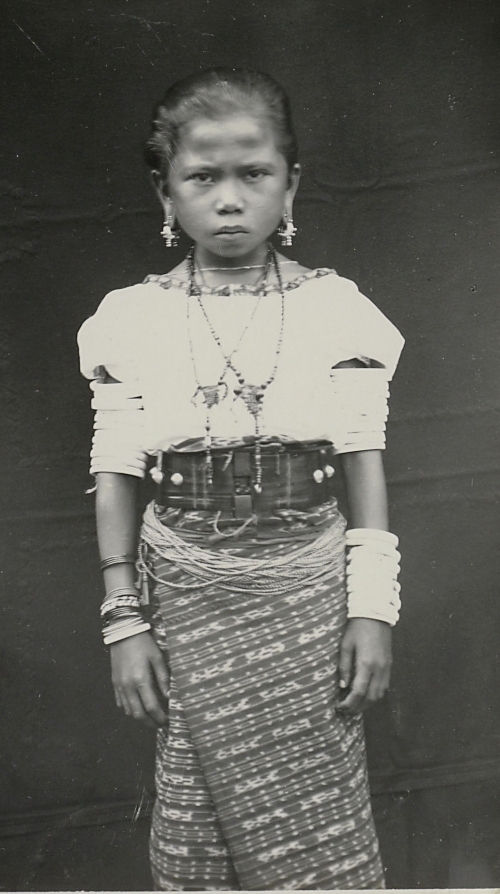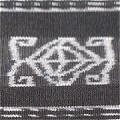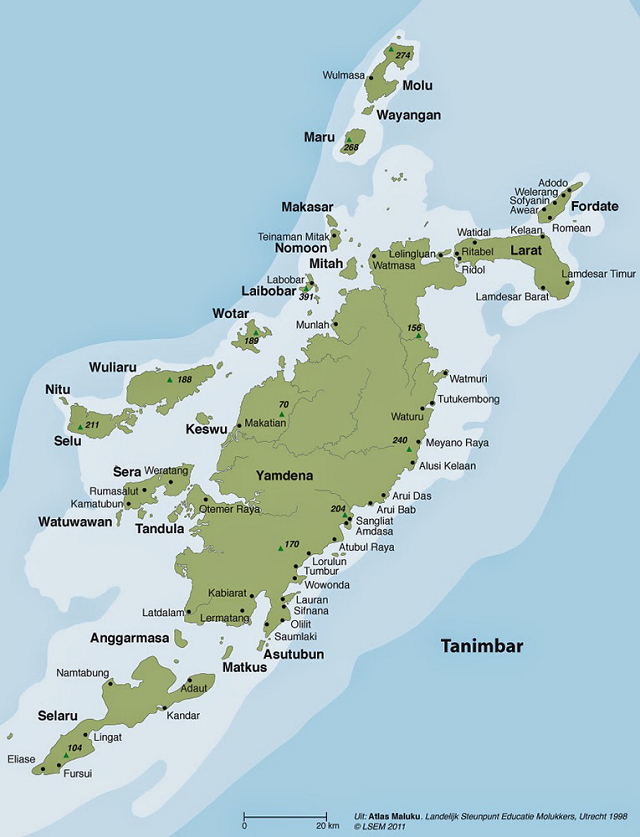Tanimbar - the end of the weaving world
Many of the Tanimbar Islands are covered with deciduous forests. Important products are copra, tortoise shell, and trepang, an edible sea cucumber. The largest island is Yamdena, some seventy miles long and forty miles wide at its widest. The administrative capital of the islands is Saumlaki, on the southern tip of Yamdena. The Aru Islands and Kai Islands lie to the northeast, and Babar and Timor lie to the west. The total population is approximately 60,000, of whom two thirds are Christian, one third Muslim and 'other'. While it appears certain that some trade was carried on with Tanimbar by Buginese and other regional seafaring merchants well before, since the onset of the colonial period in the early 17th C. Tanimbar remained almost totally isolated for more than two hundred years. First because the islanders made clear to the Dutch that they did not want to have anything to do with its VOC by brave and ferocious acts of hostility; later, because the Dutch gave up on them and as a reprisal issued severe trade restrictions which left the islands cut off till the late 19th C., when administrative and mission posts were set up, the latter ultimately with much success. Ikat textiles from Tanimbar - simple chicTanimbar is one of the very few places in Indonesia where ikat is not in any way related to traditional beliefs and customs, apart from the use of ikat textiles as part of bridal exchanges. There are no proscriptions or taboos concerning its manufacture (one exception being the pemali or taboo on pregnant women handling dyestuff), nor do they serve as emblems of class distinctions, and there are no ceremonies and few rituals marking the commencement of completion of a weaving project. Whereas having black hands, the mark of a busy weaver, used to be a requisite for marriage, in the later parts of the 20th C. weaving became an option, often chosen to create household income, as cloths might be sold to others, including tourists.The fact that on Tanimbar ikat is not embedded in adat is almost certainly due to the fact that it only started being made here in the last quarter of the 19th C. Before that time what woven cloths were used got imported from Timor, Kisar and other islands, and people mainly used small loincloths made from treebark. Around 1825, according to one observer, only Tanimbarese who had travelled to other islands and other notables wore clothing of any kind. Ikat textiles from the Tanimbar Islands are relatively simple, with few figurative elements, such as fish, lizards, half-moons (that actually look more like arches) and flags (signs of courage), all of which are made up of dots or dashes, strung together like bead work. Influence of Indian trade cloths and European designs, which elsewhere in the Indonesian archipelago tends to be pervasive, or at least quite noticeable, on Tanimbar is practically absent. There is however, as Van Vuuren observed, a noticeable influence of motifs from the Minahasa (northern Sulawesi) and even the Philippines. A characteristic Tanimbarese motif - which elsewhere we have seen on sarongs from Babar and Luang and on a cawat from Kisar - is a stylized backstrap loom of the compact type used on the islands. The materials used on Tanimbar are cotton, which grows wild on most islands, and fibre from the fan leaves of lontar palms. In the old days lontar fibre was the more common. Cotton was reserved for 'luxury' items such as ceremonial sarongs and clothing for the upper class in general. It offered more comfort than the fairly rough lontar, but was harder to make. Lontar fibre does not require spinning, just knotting together � a job that could be outsourced to men. After the 1930s the use of lontar fell into disuse, and 'benang belanda', factory made yarn imported by the Dutch started making inroads. The palette of cotton ikat tends to be limited to three of four shades of indigo, while those made of lontar fibre often are often limited to two: the dark brown, almost black of pigment from kamiru leaves, dark red, associated with hope, and the warm yellow of lontar fibre. The above is not to imply that Tanimbar ikats are without distinction. In fact the restrained design and limited palette can make them look decidedly chic. What helps, is that the Tanimbarese indigo, produced with a basic method without fermentation, is not colourfast in the wash, losing its starkness rather quickly. The age of the most highly prizes Tanimbar textiles may not immediately be apparent, as many of them, especially those for adat ceremonies, were rarely if ever washed, so that their colours can be as vibrant as when they were made, perhaps a hundred years ago.  Ikat weaver on Tanimbar demonstrating her work on the 'race car' model loom. Photographer unknown, 1910. Tropenmuseum of the Royal Tropical Institute (KIT), Creative Commons Licence.
Ikat weaver on Tanimbar demonstrating her work on the 'race car' model loom. Photographer unknown, 1910. Tropenmuseum of the Royal Tropical Institute (KIT), Creative Commons Licence.
Little ikating is done for men, probably none today. Whereas in the early 20th Petrus Drabbe, a missionary trained as a linguist who spent much of the 1930s on Tanimbar and to whom we still owe much of what we know about the islands, observed a great variety in Tanimbar sarongs (distinguishing 17 types from a single village), from about 1950 onwards only three main types of ikat sarongs for women have been made:
Not all sarongs fall into these three categories. Some weavers create what in Indonesian is called pagi-sore ('morning-afternoon') designs - such as we often see on Javanese batik, and, in imitation, also on Sumba ikats - where the two halves of the cloth do not mirror each other, but are completely different, as in our sarong PC 262. |





